Some of the links in this post may be affiliate links.
Do you need fertilizer help for your geraniums? In this post, I discuss my personal routine that I use to fertilize my geraniums. Fertilizing your geranium plants is really important, and if you don’t do it regularly, your plants will not flower to their full potential.
Keep reading to learn about the best fertilizers for geraniums for endless blooms the whole growing season!
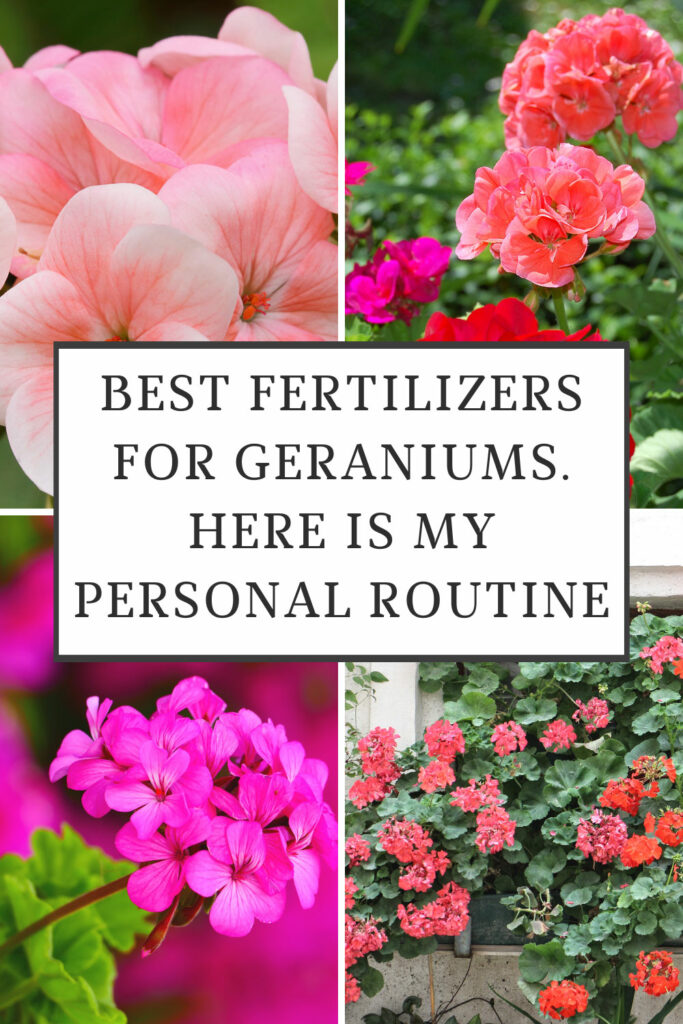
Table of Contents
BEST FERTILIZER FOR GERANIUMS
If you’ve struggled with getting your geraniums to bloom well, or maybe they’re blooming but you want more, using the right type of fertilizer on a regular basis is very important.
Please note that this article refers to plants in the genus Pelargonium which we commonly just call annual geraniums (although they are actually tender perennials). This is NOT to be confused with the true geranium that belongs to the genus Geranium.
Although both types are perennial geraniums, true geraniums are much hardier perennials, whereas Pelargonium plants are much more tender and will freeze and die in cold climates and are often simply treated as annuals.
Geraniums are heavy feeders, particularly those in pots. The plants can be rather prone to nutrient deficiencies if you don’t fertilize them at all, or even if you don’t fertilize frequently enough.
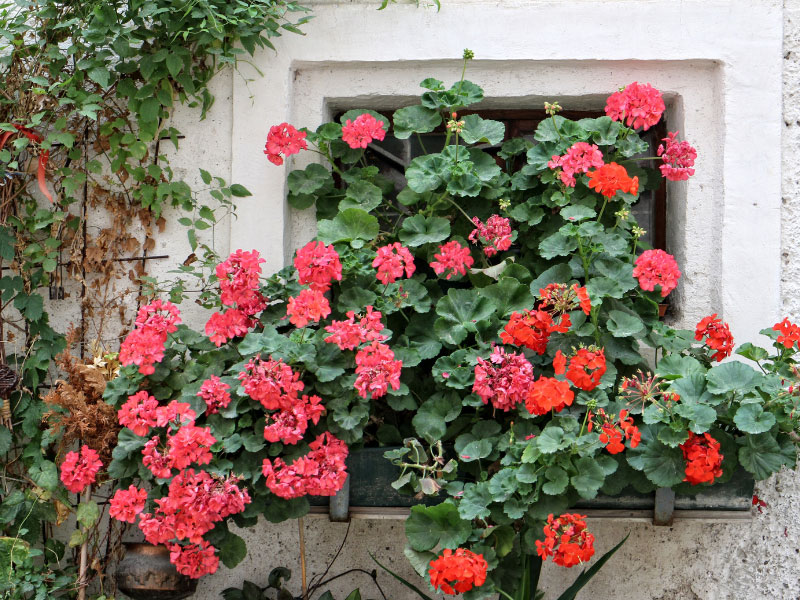
An example is potassium deficiency in geraniums where you’ll have yellowing or browning of the edges of the leaves.
So in order to have lush green, healthy plants that are loaded with flowers all season long, you need to be regularly providing all the essential nutrients and trace elements.
Outdoor plants in pots need a lot of fertilizer because of leaching when you water. The constant watering, particularly during hot weather, will leach out important nutrients from the potting mix, so plants in pots generally need a lot more fertilizer than those in the ground.
There are many types of fertilizers that you can use, but here is the routine that I use to have flowering plants all season long.
After I discuss the 3 fertilizers I like to use, I’ll talk about other important tips at the end of this post to ensure that you have robust plants.
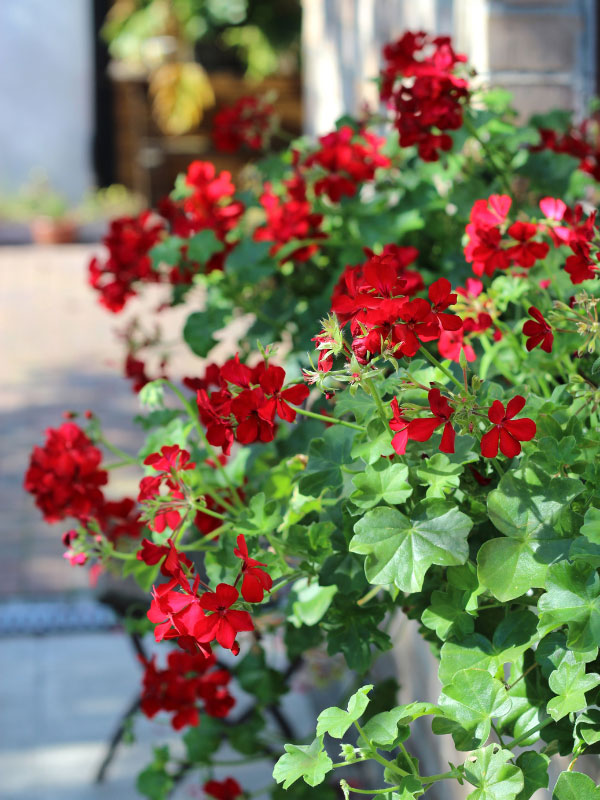
1. SLOW-RELEASE FERTILIZER
Early in the season when I buy my garden geraniums, I like to use a slow-release fertilizer like Osmocote Plus when I pot up the plants. Simply follow the label instructions and mix in the recommended amount of Osmocote that is recommended for the size pot you are using.
Osmocote Plus comes in the form of little round balls that you simply mix into your soil. Each time you water, it will slowly release nutrients into the soil.
This is a good starter fertilizer to get your plant off on the right foot for the season.
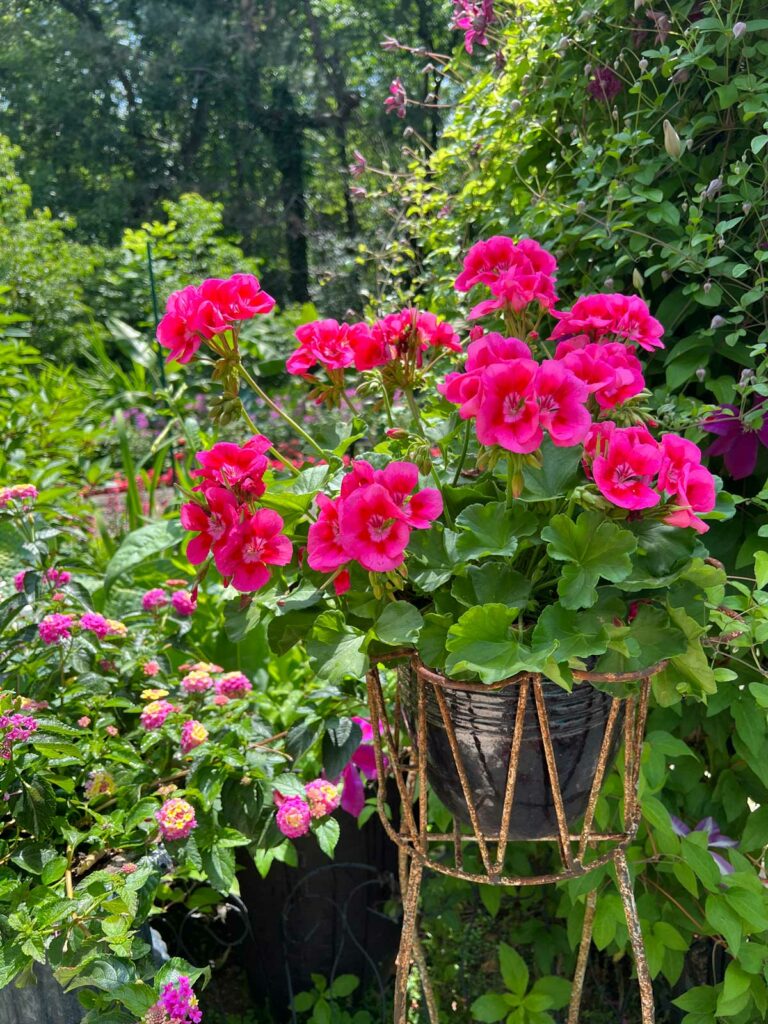
2. FISH EMULSION
After about a week or two of planting in my pots, I’ll start to use a good fish emulsion fertilizer. If you are growing indoor geraniums, I would avoid using organic fertilizers like this because they are very stinky! But it is wonderful for healthy foliage and the overall health of your geraniums.
I like using Alaska Fish Fertilizer (link to Amazon), and you can also use this on any of your other garden plants as well.
Make sure that you shake up the fish emulsion because it will settle at the bottom. At this stage of the season, I’ll want my young plants to increase in size and keep growing in order to set the foundation for a lot of blooming that will occur in the summer and fall.
I’ll typically use Alaska Fish Fertilizer weekly for about a month or so.
Fish emulsion contains a higher amount of Nitrogen content (versus Phosphorus and Potassium), so it will help with overall plant growth. This way, your plant can get nice and big and strong in order to support abundant blooms as the season progresses.
The Alaska Fish Fertilizer NPK ratio is 5-1-1. This stands for the percentage of Nitrogen, Phosphorus, and Potassium, respectively, and are the main nutrients that plants need for growth. Good fertilizers also contain many other necessary nutrients that are needed in smaller amounts.
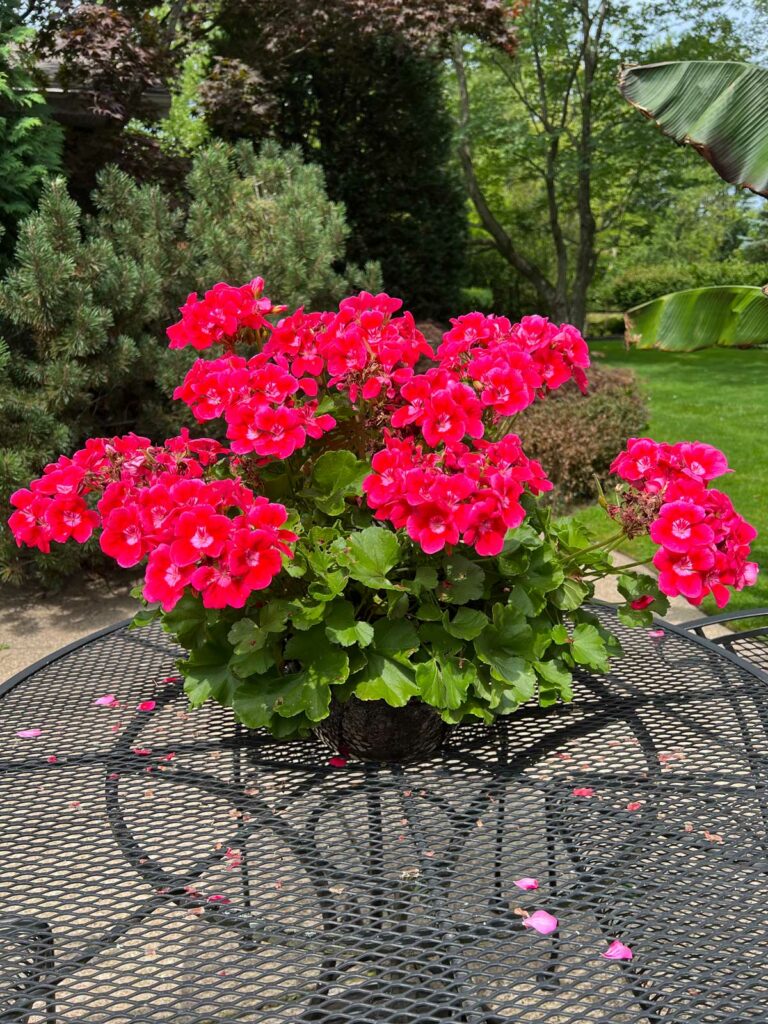
3. BLOOM BOOSTER
After about a month of using the fish emulsion, I’ll switch to a bloom booster water-soluble fertilizer for the rest of the summer. I like to use Miracle Gro Bloom Booster fertilizer every single week.
You may think this is excessive, but it is not! I mix in a tablespoon per gallon of water and use this weekly up until early Fall when I’ll stop fertilizing as cooler temperatures come.
This is also a suitable fertilizer for a wide variety of different plants, particularly for most flowering annual hanging baskets for full sun, in order to help them keep blooming all summer long.
OTHER GERANIUM CARE TIPS
DEADHEADING
Please note that your geraniums may have large explosions of bloom, and at that point, your plant will slow down a bit, but there should still be new flower buds forming if you look closely under the foliage. Geraniums are pretty messy plants so deadheading the spent flowers is important.
Snip off the flower stalks as close to the base of the plant as possible once the flowers are done. This will help redirect your plant’s energy into growing more leaves and flowers, instead of maintaining old flower stalks and forming seeds.
Make sure to brush off any petals that have fallen on the foliage as this can disfigure the foliage over time and cause brown spots, as well as encourage pests and disease.
LIGHT
Light is the number one consideration when it comes to blooming. Fertilizer will not cause a plant to bloom, but it will greatly enhance it.
If you have very little direct sun, your geraniums will not bloom to their potential. Give your geraniums at least a half day of direct sun, if not more.
WATERING AND DRAINAGE
Proper watering is also essential for your geraniums in pots and is necessary to develop healthy, strong roots. If you have a poor root system, your plant itself will suffer, let alone not bloom well.
You can easily rot out your geranium plants if they stay too wet, so always allow the top inch or so of the potting mix to dry out before watering again. If the surface still feels damp, don’t water!
On the opposite end, never allow your geranium’s soil to dry out completely, especially for too long. You’ll notice that the lower leaves will turn yellow, and then it will continue to occur if the drought continues.
Geraniums must be planted in pots with drainage holes, and need a well-drained soil, or they can rot out easily, particularly in colder weather.
If you can be consistent with watering and fertilizing, and ensure that your plant has at least a few hours of direct sun or more, this will provide the best results for vigorous growth and plentiful flowering.
And did you know that geraniums can be overwintered easily?
I hope you’ve enjoyed this post on the best fertilizer for geraniums. There are many different ways to approach fertilizing, but which ones do you like to use? Comment below. I’d love to hear!

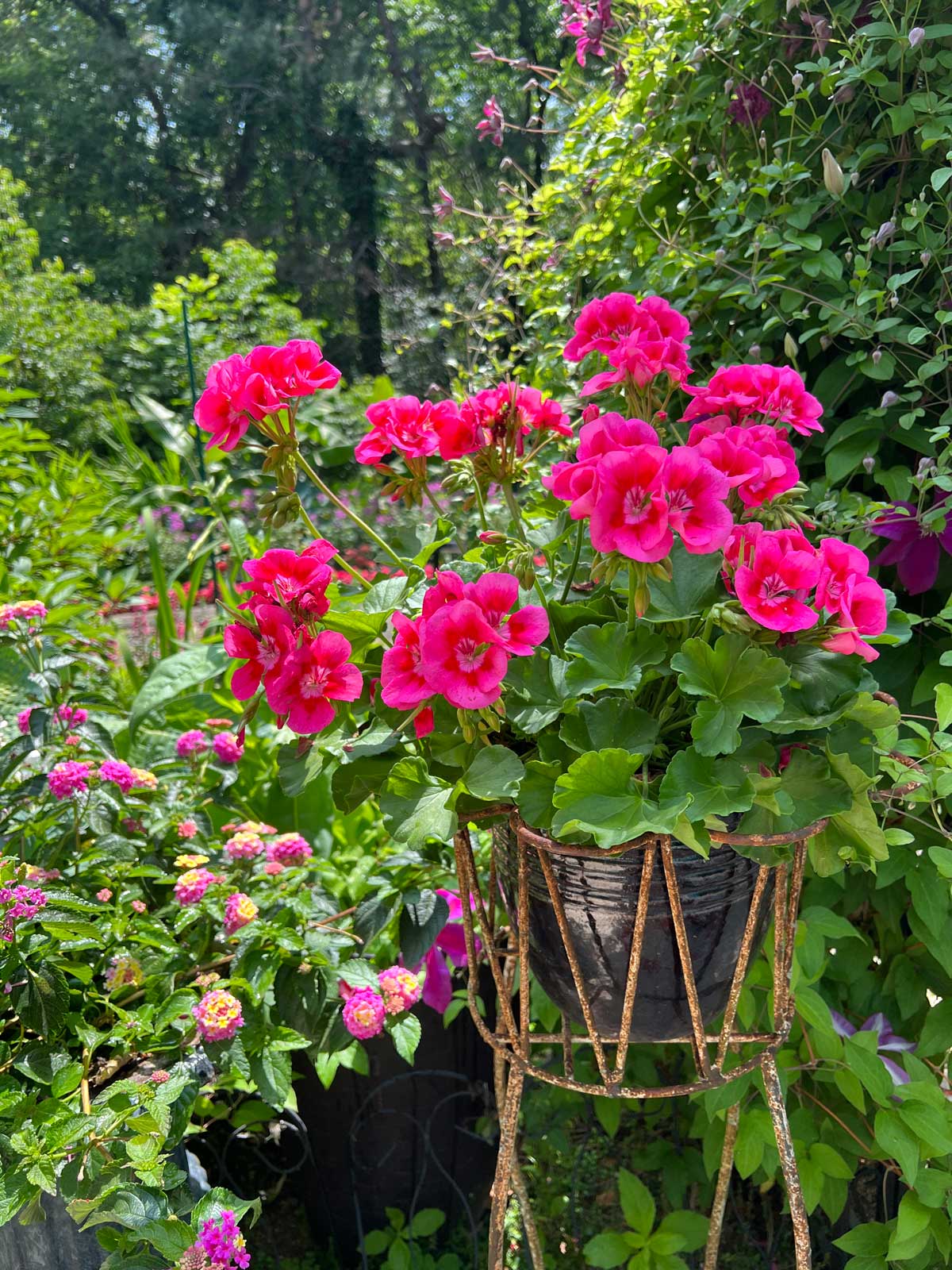
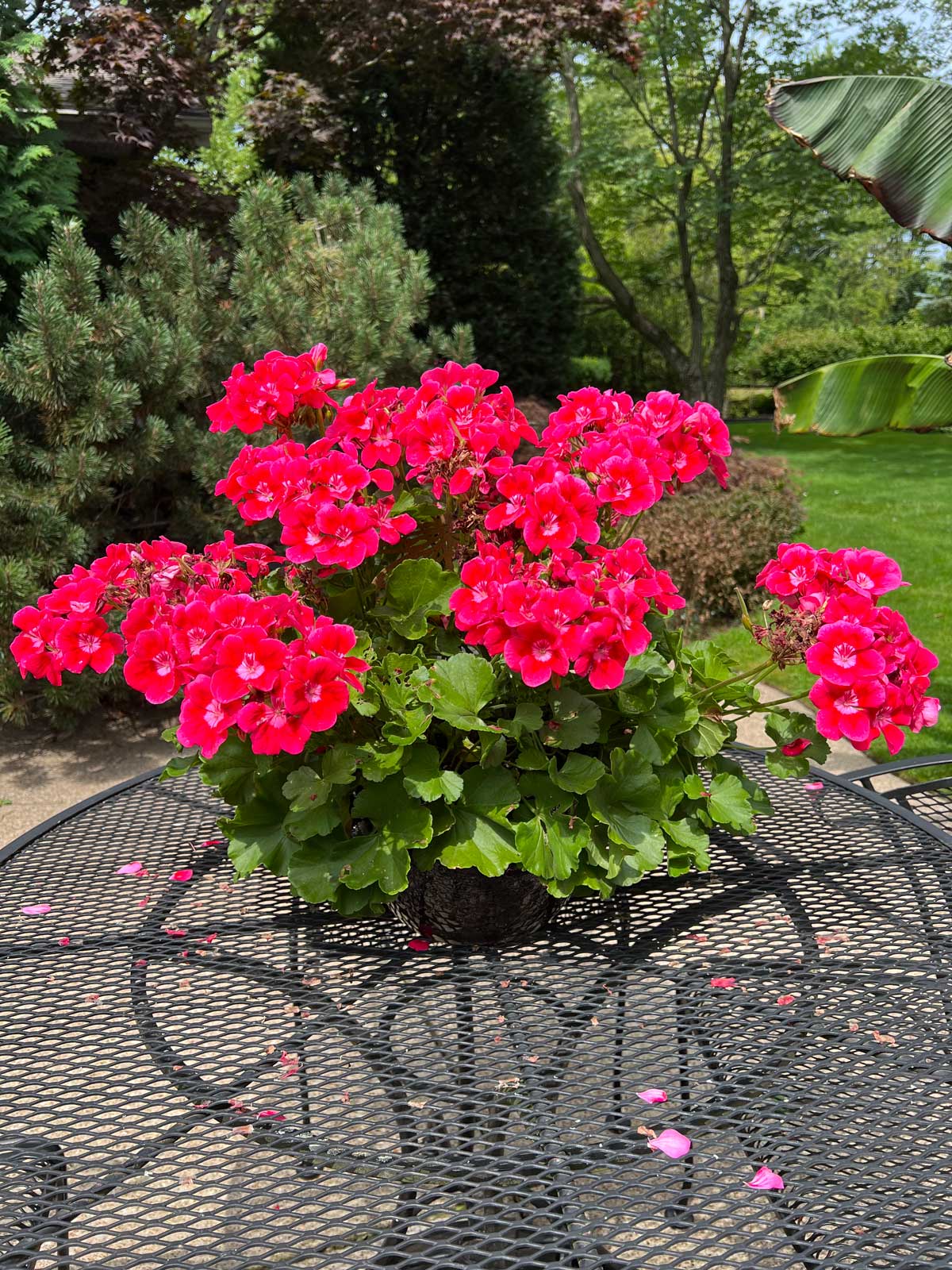
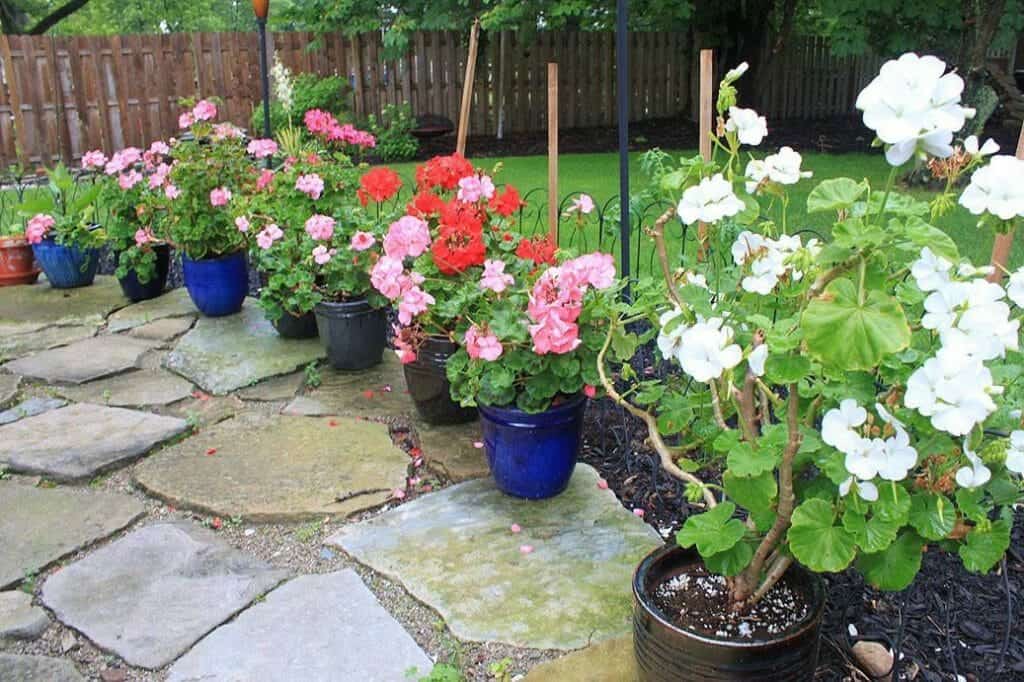
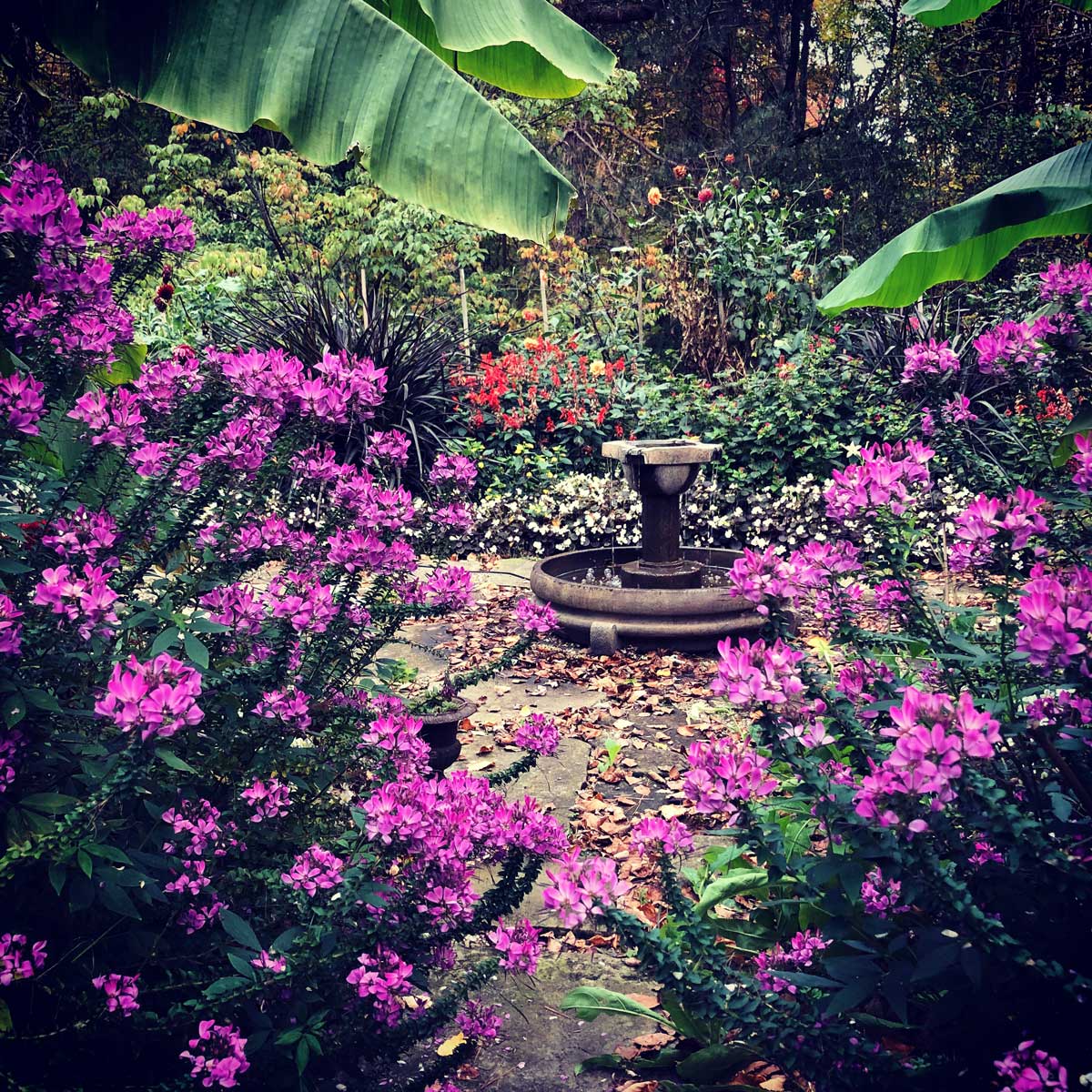
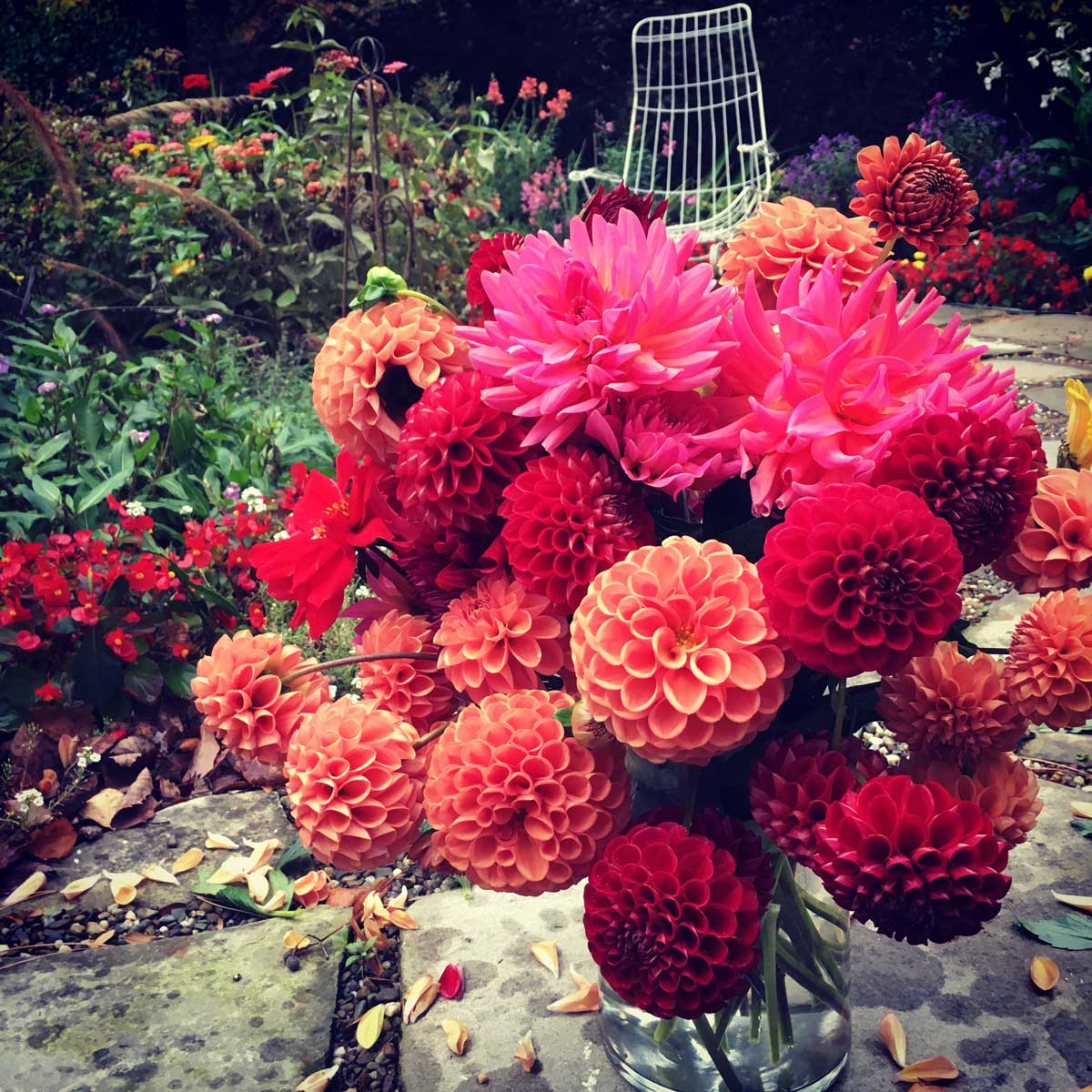
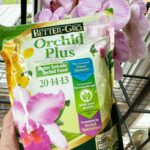
Hope
Sunday 24th of August 2025
Thank you so much for this very informative post. There are varying information which often leads to confusion. I was not fertilizing my geranium’s often and little to no flowers. I started now doing it weekly, started last week. So I hope they can be in full bloom by October 11th. I am planning a house gathering then. But also now know for next year on what to do thanks to you sharing. Cheers
Raffaele Di Lallo
Tuesday 26th of August 2025
You're very welcome Hope!